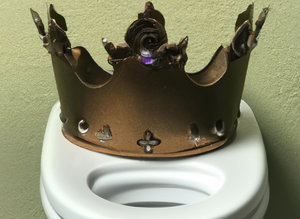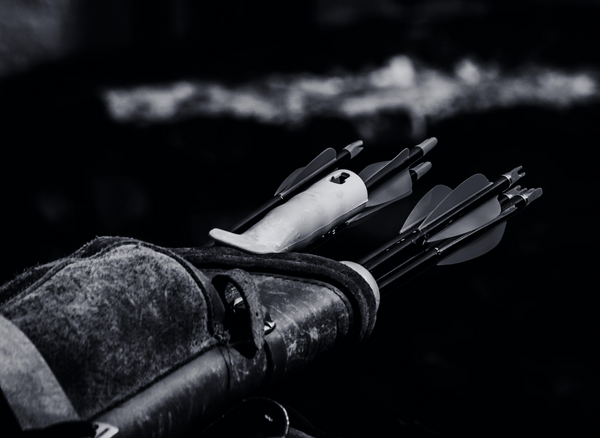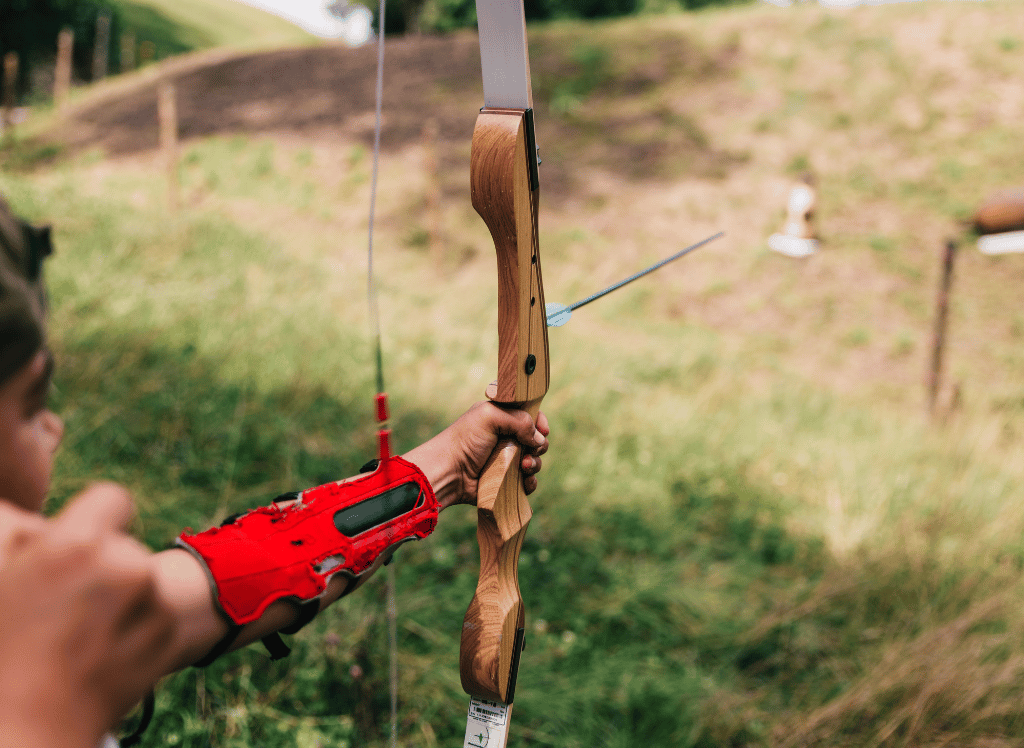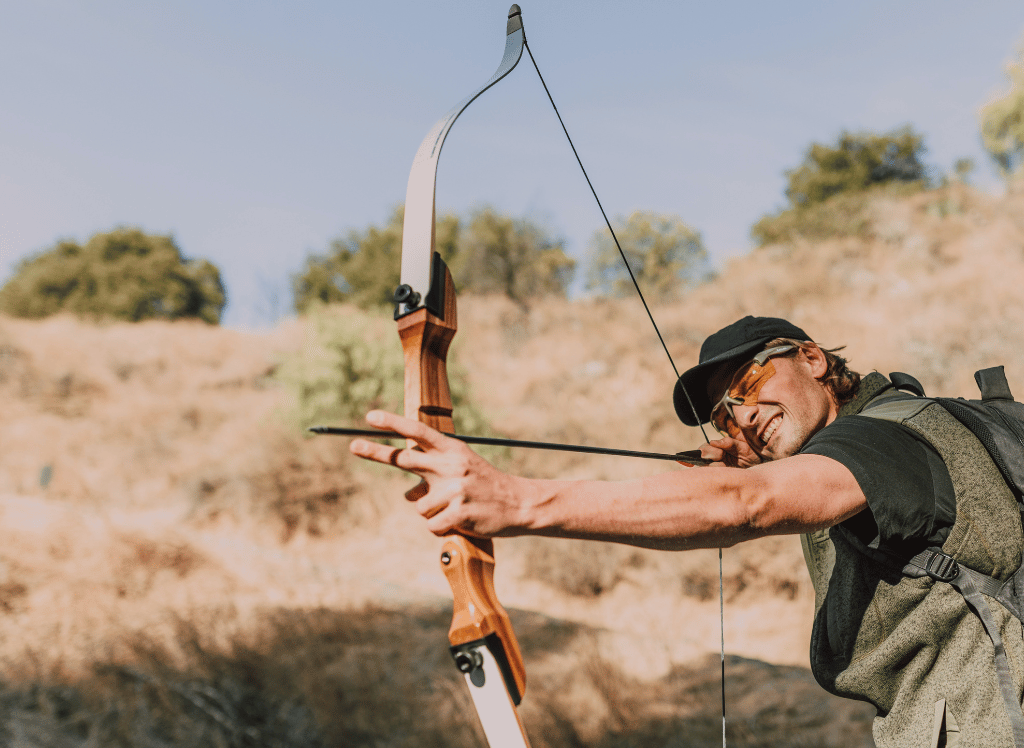Archery is an ancient sport with a rich history, and one of the most iconic symbols of archery is the quiver. But, what is a quiver in archery? The quiver has been an essential part of an archer’s arsenal for centuries, but how much do we really know about this specialized piece of equipment? In this post, we will delve into quivers, exploring their purpose, various types, materials, and designs, and how to properly maintain and care for them. If you're just starting, this guide will help you make the an informed decision when choosing a quiver for your needs.
Keys
- Quivers are used to store and transport arrows for archers.
- There is a variety of quiver types, including hip, back, bow-mounted and field quivers.
- Factors such as arrow capacity, weight distribution and personal preference should be considered when selecting a quiver style that best suits your needs.
Purpose of a Quiver
The term “quiver” itself has a fascinating origin, derived from the motion used when extracting arrows from it, which is closely related to the archer’s body and can be defined as a “repository, resources or collection”.
The primary purpose of a quiver is to provide a convenient means of keeping and safeguarding an archer’s arrows in one location, making it easier to carry arrows.
Historically, the open Japanese quiver is the oldest form of quiver and was utilized by horsemen. Nowadays, japanese quivers are produced using materials such as metal, nylon, and high-density plastic. A typical quiver can hold between 25-30 arrows, and it is common for archers to carry twice as many arrows as they anticipate shooting to ensure they have enough spare arrows in the event that shots are missed or arrows become damaged.
Quivers can be secured in various ways:
- As a belt quiver
- Worn on the back
- Attached to the bow
- Placed on the ground
Ultimately, the choice of quiver depends on the archer’s personal preference and the specific requirements of their archery practice or hunting experience.
Types of Quivers
There are various types of quivers available for archers, each with its own unique features and benefits, such as target archers and traditional archers.
This section will provide a thorough analysis of the different types of quivers, including:
- Hip quivers
- Back quivers
- Bow-mounted quivers
- Field quivers
We aim to elucidate their unique characteristics and advantages.
Hip Quivers
A hip quiver is designed to be secured to the archer’s waist, providing convenient access to arrows and making it a popular choice for both modern and traditional archers. These quivers often feature pockets for accessories and gloves, as well as dividers to organize arrows for various purposes, even when carrying fewer arrows.
A notable example of a hip quiver is the closed Japanese quiver, also referred to as “utsubo”. This cylindrical pouch is worn on the right hip and houses the arrow shafts, featuring a hinged lid that can be used to enclose the cavity at the front of the pouch, which is designed to accommodate the arrow nib.
Hip quiver use primarily offers the advantage of simplicity. The arrows are easily accessible, making it an ideal choice for target archers who need to quickly retrieve their arrows during practice or competition.
Back Quivers
Back quivers are worn across the back, offering a more traditional look reminiscent of Robin Hood. They typically feature a classic design and are crafted from leather or a leather-like material. A back quiver can easily accommodate between 20 and 25 arrows, providing quick access for reloading after each shot.
While back quivers have a certain appeal due to their traditional aesthetics, they do have some drawbacks. One notable disadvantage is that they are not ideal for maneuvering through branches or distinguishing arrows. Additionally, some archers may find it challenging to efficiently retrieve arrows from a back quiver, which may require practice to perfect.
Nevertheless, back quivers remain a popular choice among traditional archers who appreciate their classic design and the convenience of carrying arrows on their back without the arrows getting in the way of the archer’s body. With the archers carry technique, they can easily access their arrows while maintaining a comfortable and efficient shooting stance.
Bow-Mounted Quivers
Bow-mounted quivers attach directly to the bow, providing balance and easy access to arrows. Most bow quivers can store a limited number of arrows, usually between three to seven arrows, which may be a drawback for some archers who require a higher capacity. So, how many arrows can be stored in these quivers? Generally, it’s between three and seven.
One downside of using a bow-mounted quiver is the extra weight it adds to the bow. This can create balance issues and may impede the bow from resting comfortably in the archer’s lap. However, some archers may prefer this added weight as it can provide additional stability during shooting.
Despite their potential drawbacks, bow-mounted quivers remain a popular choice for archers who value the convenience and multiple grip points they offer, as well as the ability to have their arrows within quick reach during shooting.
Field Quivers
Field quivers are designed for field archery and have the following features:
- Sleek design
- Backward-tilting arrows for stealthy movement and weight distribution
- Worn on the belt
- Arrows oriented towards the back
- Originally designed for field disciplines due to their shorter size, enabling the archer to shoot or retrieve arrows from a target without hindrance.
One of the benefits of using a field quiver in indoor tournaments is the positioning of the fletching in a backward direction, which helps to avoid arrows from hitting the person behind when on a close shooting line, which is common in indoor tournaments.
Field quivers provide a practical solution for field archers who require a compact and easily accessible quiver that allows for smooth, unobstructed shooting and retrieval of arrows.
Factors to Consider When Choosing a Quiver
Choosing a quiver requires consideration of factors like arrow capacity, weight distribution, and personal preference. A quiver’s capacity, or the number of arrows it can hold, is an essential factor to consider based on your specific archery needs. Weight distribution refers to the manner in which the quiver distributes the weight of the arrows, which can impact your comfort and shooting performance.
Ultimately, personal preference plays a significant role in choosing the right quiver for you. Whether you prefer the traditional aesthetics of a back quiver or the modern convenience of a bow-mounted quiver, the best choice will depend on your individual needs and style.
Taking into account these factors will facilitate a well-informed decision when you select the most suitable quiver for your archery practice or hunting adventure.
The Art of Carrying a Quiver: Adapting to Different Styles
Different quiver types have unique methods of carrying or wearing. Adapting to these various styles is crucial for achieving maximum comfort and efficiency. For instance, the open Japanese quiver is worn on the back, with the feathers of the arrows extending over the right shoulder. Hip quivers, on the other hand, should be worn on the right hip, with the arrows facing downward.
Back quivers are worn on the back, with the arrows pointing upwards, while bow-mounted quivers are attached directly to the bow. Grasping the art of carrying a quiver and adapting to diverse styles can enhance your overall archery experience and boost your performance.
Experimenting with various quiver styles and carrying methods can help you discover which option works best for your needs, ultimately enhancing your comfort and efficiency on the shooting range or in the field.
Traditional vs. Modern Quivers: Comparing Materials and Designs
Typically made from leather or natural materials, traditional quivers exhibit a classic aesthetic. They’re often worn on the back or hip and can carry fewer arrows. Modern quivers, on the other hand, are usually fashioned from materials like fabric or plastic and boast a more streamlined and utilitarian design. They can be attached to the bow or worn on the body, and they usually have the capacity to store more arrows.
Both traditional and modern quivers come with their own set of pros and cons. Here are some key points to consider:
- Traditional quivers have a timeless design and can accommodate a reduced number of arrows.
- Contemporary quivers offer a more efficient and practical design, as well as increased capacity for arrows.
- Traditional quivers crafted from leather or natural materials may not be as resilient as contemporary materials.
- Modern quivers may not possess the same aesthetic appeal as traditional quivers.
Ultimately, the choice between traditional and modern quivers will depend on your personal preferences and specific archery needs. By comparing materials and designs, you can make a more informed decision and choose the quiver that best aligns with your style and requirements.
How to Properly Maintain and Care for Your Quiver
To ensure your quiver’s longevity and functionality, proper maintenance and care are indispensable. It is recommended to clean your quiver on a regular basis, at least once a month, using a soft cloth and a mild detergent. Additionally, inspect your quiver for any fissures, rips, or other damage at least once a month to assess signs of wear and tear.
When storing your quiver, choose a cool, dry place away from direct sunlight. It is also recommended to store your quiver in a protective case or bag to ensure its safety. If your quiver is exhibiting signs of wear and tear or is no longer functioning optimally, it may be time to replace it.
Adhering to these maintenance and care tips can extend your quiver’s lifespan and keep it in prime condition for your archery activities.
Archery Quiver FAQs
Not sure which quiver is suitable for your needs? Worried that you'll end up spending too much on something that won't work? Don't want to get stuck with something you can't use? Stop guessing and start browsing our Frequently Asked Questions section for the information you need to make an informed purchase.
How many arrows is a quiver?
A quiver typically holds 4-7 arrows, and an archer is expected to carry up to 50 arrows per quiver, depending on the number of quivers carried and size of the arrows.
Why is it called a quiver of arrows?
The phrase "quiver of arrows" is derived from the practice of carrying ammunition in a quiver; a cylindrical case often used by archers to store their arrows. It symbolizes having a variety of tools and resources ready for use.
Do you keep arrows in a quiver?
Yes, it is recommended by professionals to store arrows in a quiver.
Do you need a quiver for archery?
For competitive archery, a bow-mounted quiver is not necessary since it can cause balance issues. Instead, shooters can wear hip quivers which are preferable for precision accuracy.
What are the different types of quivers available for archers?
Archers have a wide selection of quivers to choose from, including hip, back, bow-mounted and field varieties.
Summary
In this guide, we have explored the world of quivers, delving into their purpose, various types, materials, and designs. We have also discussed factors to consider when choosing a quiver, how to adapt to different carrying styles, and how to properly maintain and care for your quiver.
If you're just starting, understanding the intricacies of quivers and their unique characteristics is essential for making an informed decision when selecting the perfect quiver for your needs. Armed with this knowledge, you can enhance your overall archery experience and performance, ensuring success on the shooting range or in the field.









